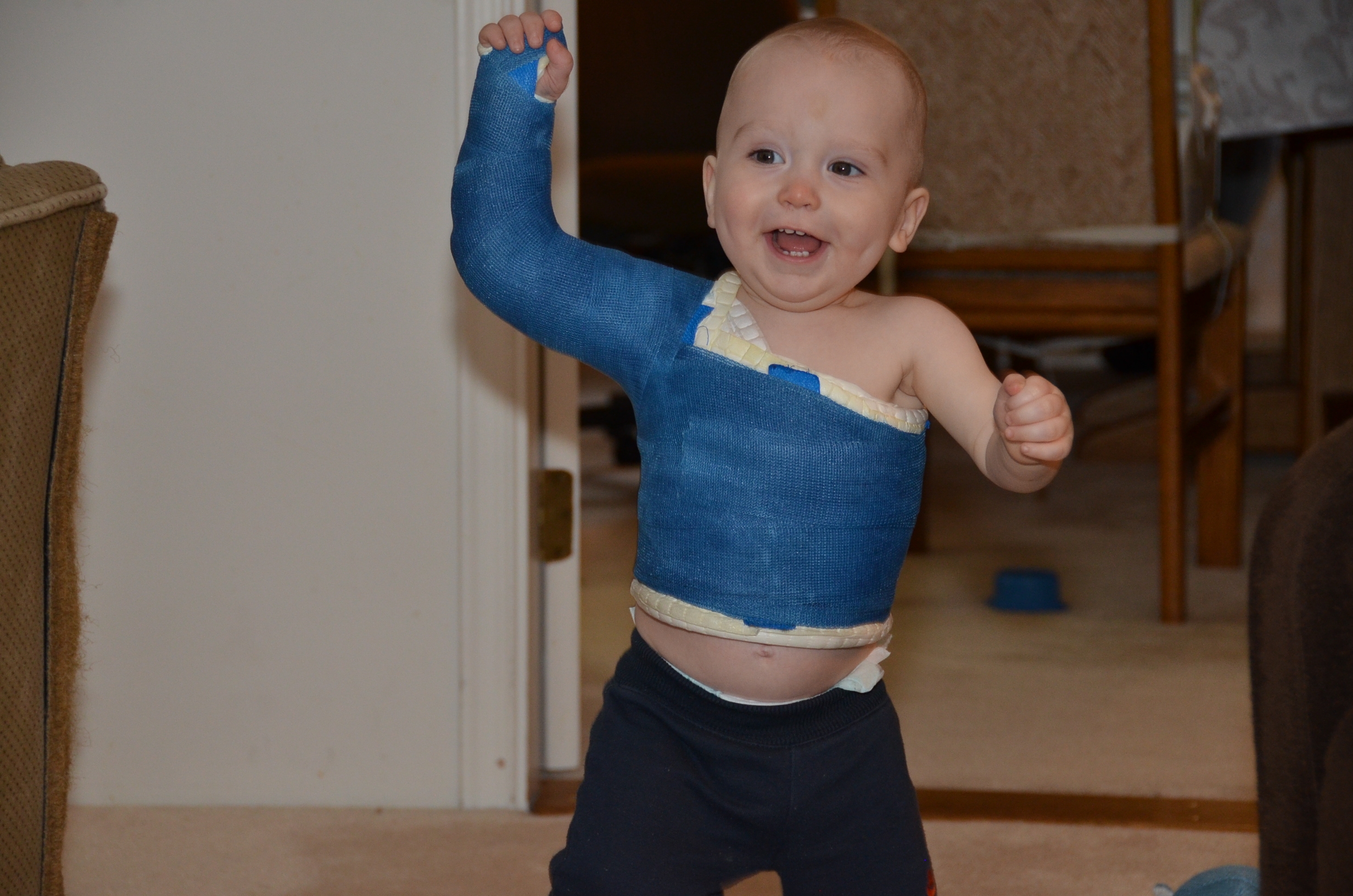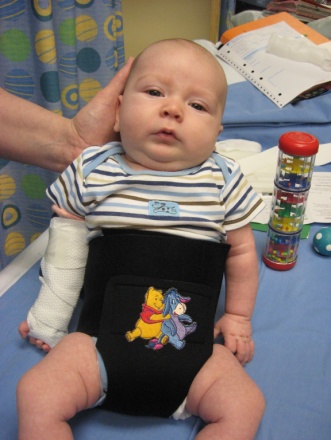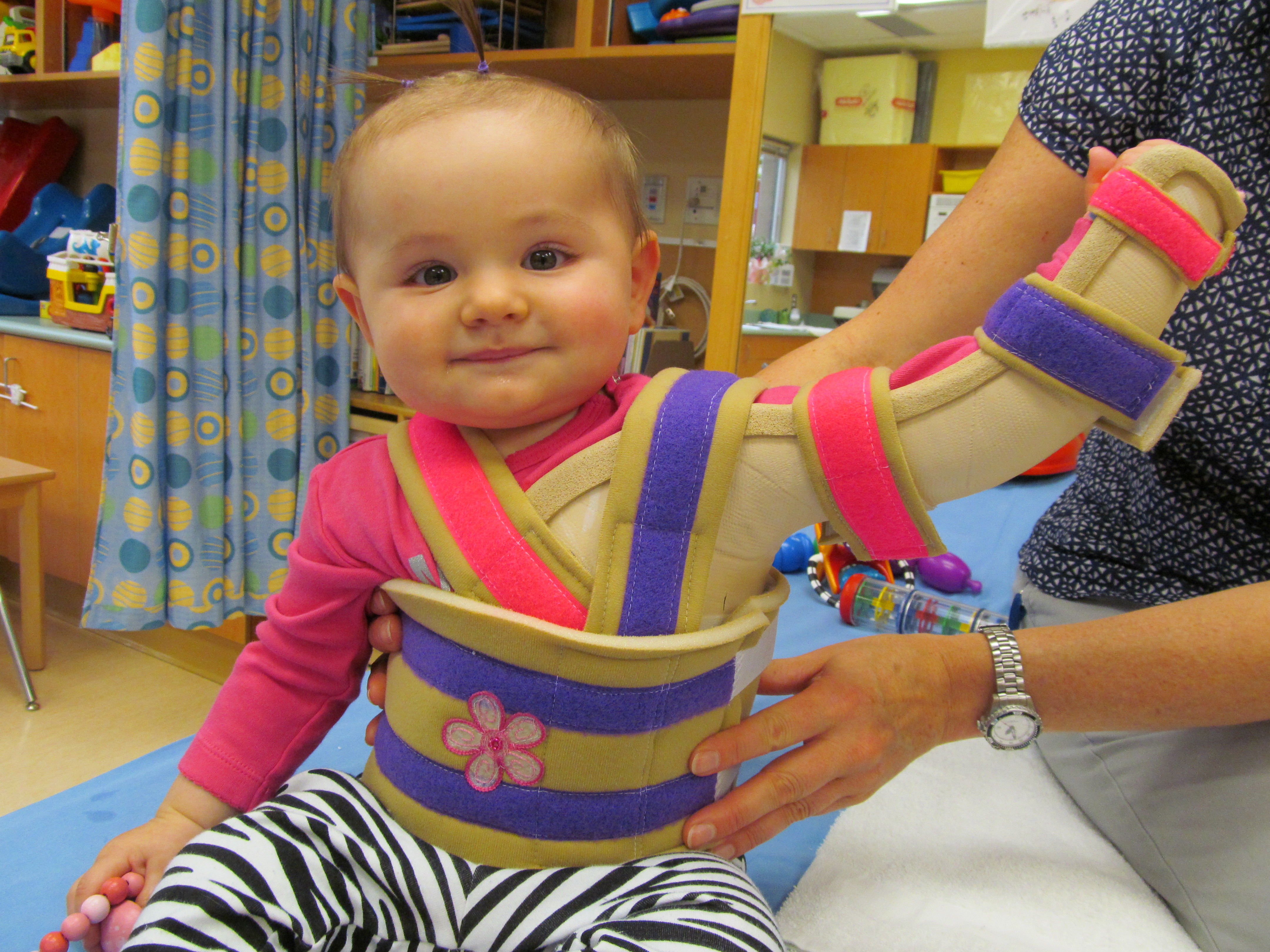Botox injections
Botulinum Toxin A (commonly referred to as Botox) is drug that acts as a temporary paralyzer of select muscles when injected into the neuromuscular junction of the target muscle. Depending on the severity of your child’s injury and recovery of arm movements, an imbalance of muscle strength and flexibility can develop. Over time, this imbalance can permanently affect growth and movement of the shoulder joint.
Injecting the tight muscles with Botox allows us time to work on the positioning of the shoulder joint which includes lengthening the tight muscles while strengthening the weaker muscles. The most common muscles injected are the pectoralis major and subscapularis muscles on the affected side.
The use of Botox is generally recommended if by around 4-6 months of age your child’s shoulder joint continues to be tight with stretching exercises, and/or if a review of ultrasound images demonstrates that the shoulder joint is not sitting in an ideal position. The Botox will take effect instantly, and your child will be able to feel differences in their range of motion within 1 to 2 weeks. The effects last about 3 months.
There are no known side effects for the use of Botox in children with brachial plexus injuries.
Botox and positioning
Botox is injected into select muscles by a trained orthopedic or plastic surgeon. Your child will be placed under general anaesthesia, and the surgeon will use a muscle stimulator (a small device that sends a mild electric current to the muscle) to ensure that they are injecting the correct muscles.
We always recommend some form of arm positioning following the Botox. The exact form varies depending on your child’s needs and degree of shoulder tightness, which will be directed by your child’s treatment team.
If a cast has been recommended to support positioning following the procedure, the cast will be applied immediately following the injection.
The process will not be painful; in fact, Botox may provide pain relief for tight muscles.
If a cast is applied, your child may feel frustrated for the first couple of days; children typically adapt to positioning devices after 1 or 2 days.
Positioning strategies
Positioning strategies may include a period of casting, which typically lasts 4 to 6 weeks, followed by use of the Sup-ER splint or a shoulder spica splint for several months.
Shoulder cast |
Sup-ER Splint |
Shoulder spica splint |



